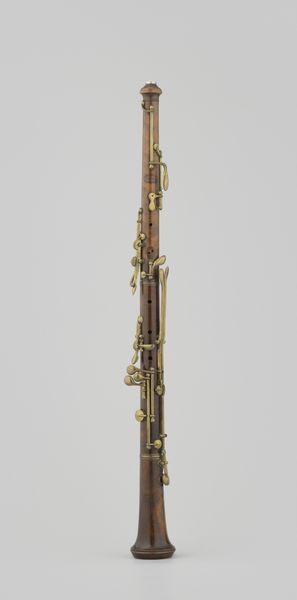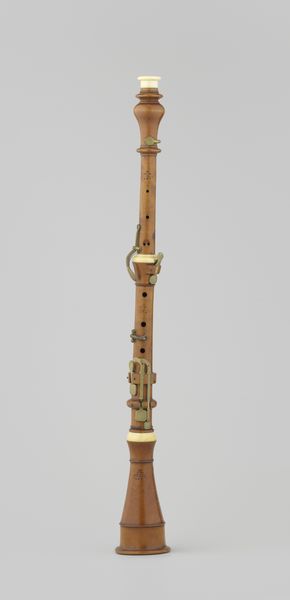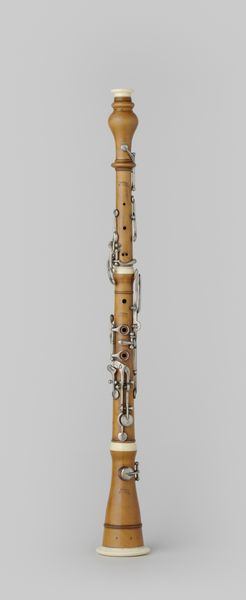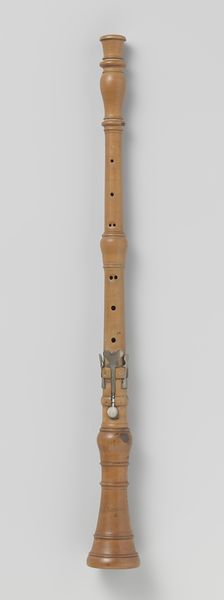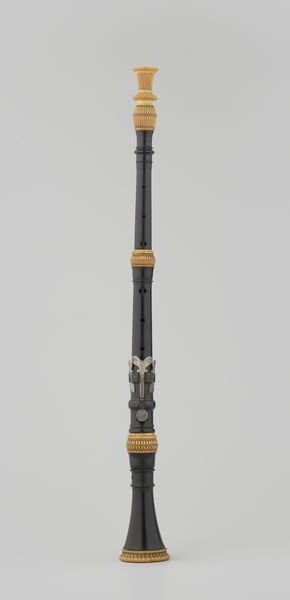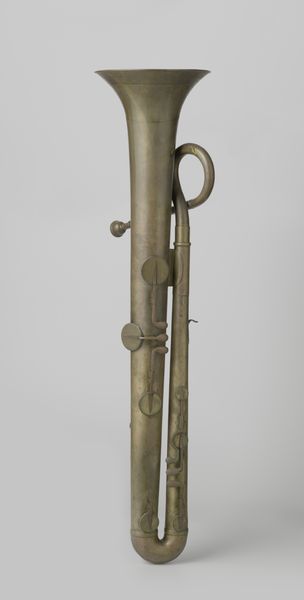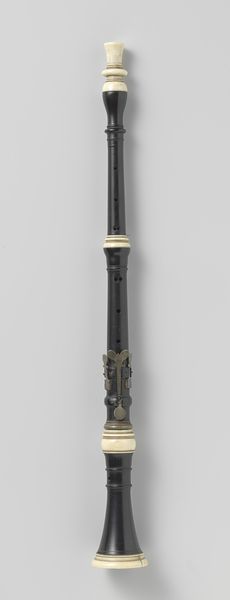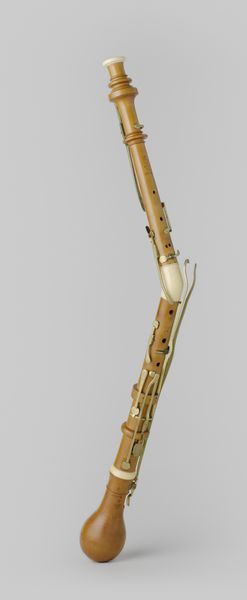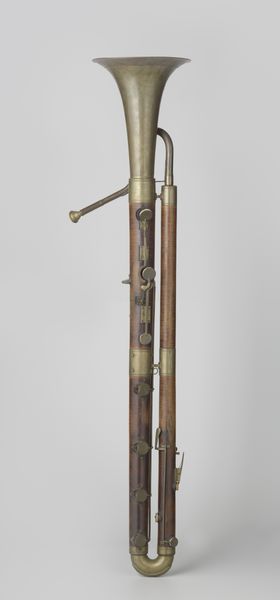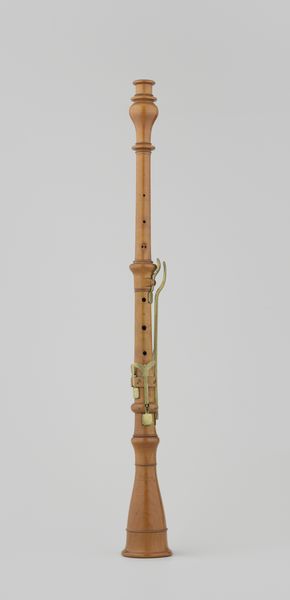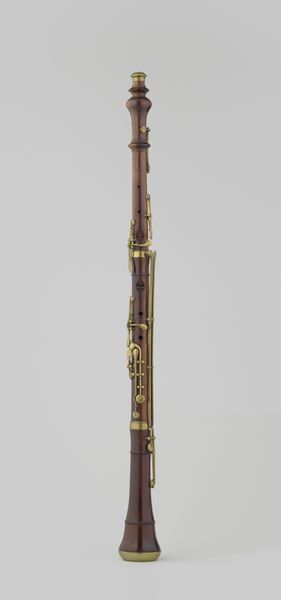
mixed-media, metal, wood
#
mixed-media
#
medieval
#
metal
#
wood
Dimensions: height 23.0 cm, diameter 4.5 cm
Copyright: Rijks Museum: Open Domain
Curator: Here we have an object from the early 19th century, the upper joint of a clarinet, crafted by Ludwig Embach & Co between 1825 and 1835. It is constructed from wood and metal elements. What are your initial thoughts? Editor: Intricate! And surprisingly organic looking. It's almost like a steampunk interpretation of a piece of ancient, unearthed woodwind. Does that make sense? Curator: In a way, it does. Think about the social context—music production becoming industrialized, more people able to afford instruments. But also the lingering craftsman traditions. Embach was serving a growing middle class eager for access to concert music, thus creating something both technically proficient, and within reach. Editor: I wonder what it sounded like, then? Clear and precise, like the mechanics suggest, or something more breathy and soulful because of the wooden body? Is it even still playable? I love imagining the melodies that once came out of these finger holes! Curator: As a museum object, it reflects 19th-century values: an instrument for both personal and potentially public performance. Early clarinets were used in military bands as well as in smaller chamber groups. It occupies an interesting space culturally. Editor: I’m getting a wistful vibe from its construction. Each little key and the perfectly placed holes tell of deliberate artistry. It's lovely how time changes the way we interact with these tools: Now its more muse than music, still speaking of a very human dedication to creative work, though. Curator: Indeed, and examining this object through its original historical and cultural roles enriches our understanding of how the history of music intersects with everyday life. The clarinet’s materiality speaks to production capacities and instrument accessibility in this historical moment. Editor: It also speaks to enduring connections! When I look at this I think about how making art allows us all to blow notes into the universe… which feels incredibly uplifting today. Curator: Precisely! It really speaks volumes, in silence.
Comments
No comments
Be the first to comment and join the conversation on the ultimate creative platform.
